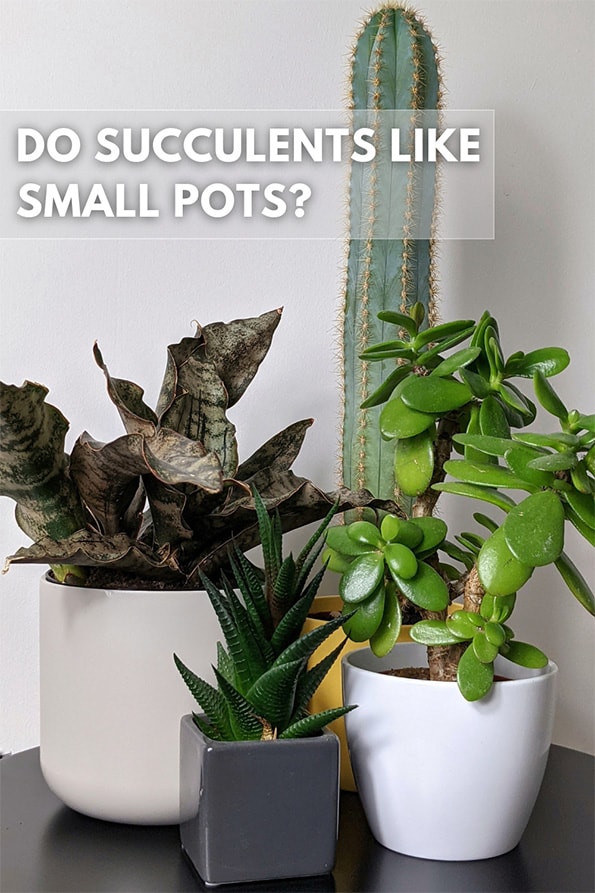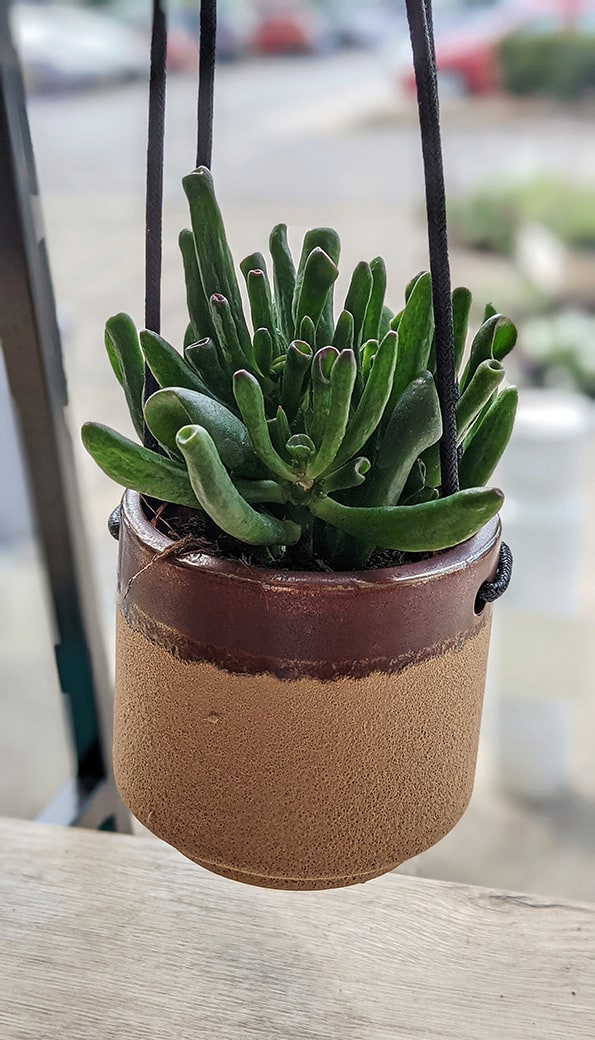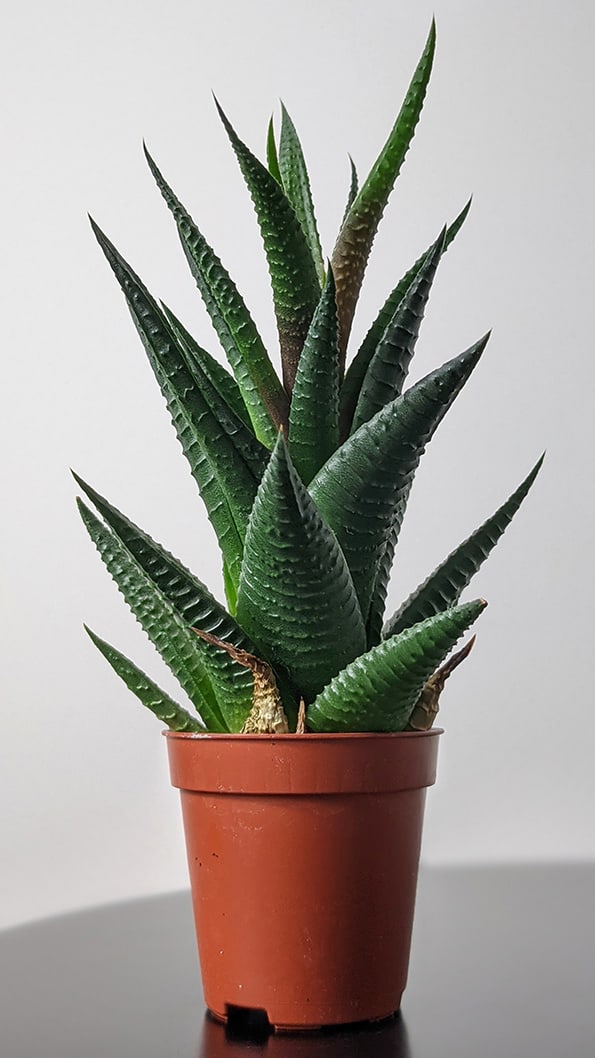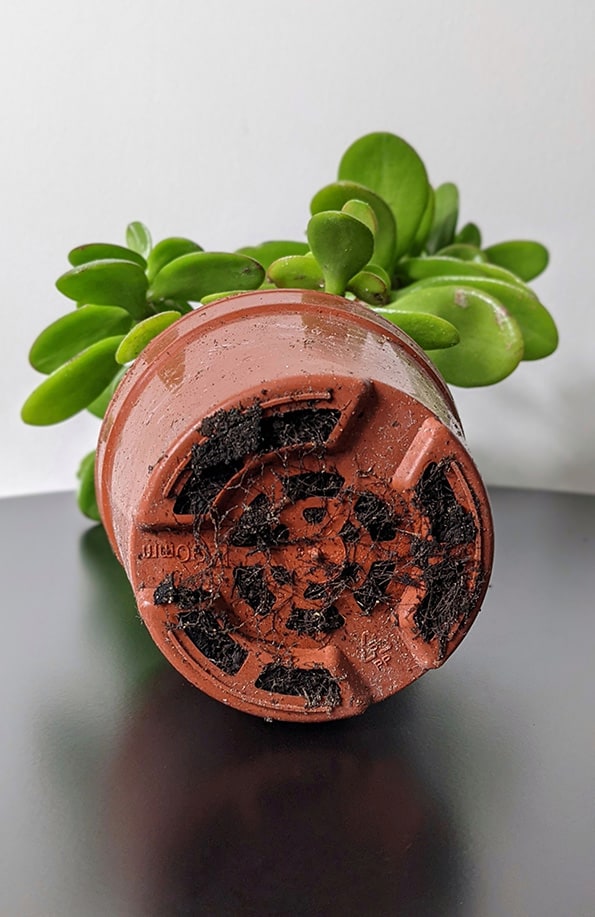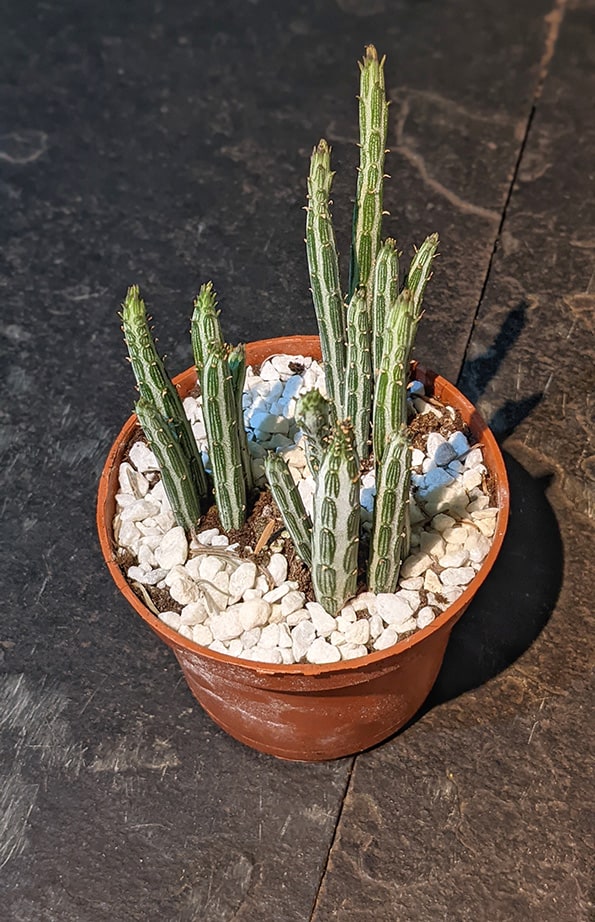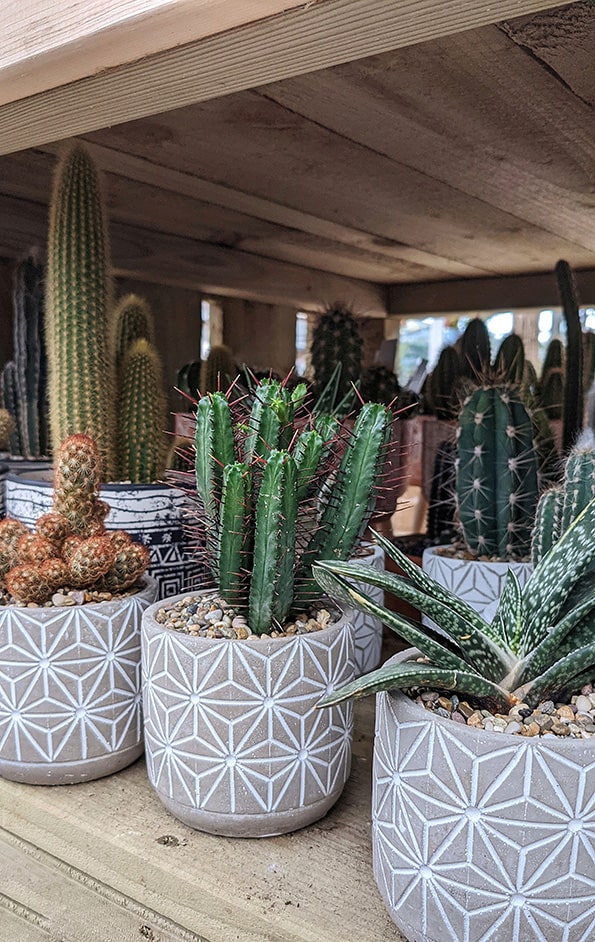If the pots have drainage holes, cacti, and succulent plants are usually fine in small pots. The root system on these plants is typically quite limited compared to other houseplants, so they can often do pretty well in smaller containers, for a while at least.
However, they're not the best pick for larger succulents or plants you want to grow to a bigger size. In fact, in these circumstances, small pots can actually be harmful.
Trying to figure out the right pot size for your succulent can be tricky, but follow my guide and you'll be an expert in no time.
Initially, I felt this was a strange topic to be writing about. But after being asked about it several times and understanding why people were curious about whether small pots were good or bad for growing succulents, I thought it was time to address the issue.
So whether you've just brought your indoor succulent to your home in a tiny tiny pot or you're wondering if it's a good idea to grow them like this, I've got you covered.

Hi, I'm Tom!
If you're like me and enjoy the challenge of growing houseplants and getting them to thrive, then Ourhouseplants can help. This website shares my knowledge and years of growing plants and provides (hopefully) helpful advice on properly caring for your indoor plant friends.
Whether you should grow succulents and cacti in small containers depends on what you're looking for in a houseplant.
In principle, there is nothing wrong with having a dainty looking succulent in a smaller container if that's the look you're going for. Bigger isn't always better, and miniature decorative planters are popular and will easily add a little pop of "cuteness" to any room.
This Gollum Jade is proof that you don't always need large pots to make a big impact.
Succulents are reasonably easy to propagate, establish quickly and look great even when very small. Being able to sell small plants as houseplants means they're some of the cheapest indoor plants you can buy. And here's why.
The seller doesn't need to take care of them for years and years prior to sale, as is the case with many other houseplants and because their small size takes up less space, transport is easier and cheaper.
This is all positive news for the buyer's wallet and also there are some strong environmental benefits if you're trying to watch your carbon footprint. There are still some negatives to growing them in smaller pots once you've got them home, which I'll cover next.
So you've got your succulent in its small pot and you're wondering if it can stay in it for the foreseeable?
Well, succulents and cacti are extremely adaptable to adverse growing conditions. They're tough cookies and some root restriction for a few months (or even years) in most cases does no harm.
If this plant had a voice, it would ask for a new pot. There is not enough room for the roots to grow further, so the size of the plant won't change.
The Hawthoria in the photo above and the Jade Plant on its side below are perfectly healthy plants. They've been in these tiny planters for a couple of years and are still as hearty and fresh looking as when I first got them.
Except there is one big problem. Or should that be "little problem".
They've not grown at all. Frozen in time with no new leaves to show for all the care and effort I give them.
Research has shown as rooting space decreases, less leaf area grows. This means once a plant's roots have completely filled a pot and no more can be grown due to lack of space, it won't be long before growth above the soil slows down before stopping entirely.
Nothing positive will happen if I keep the plants like this long term. Eventually, they won't be able to hold out any longer and will age prematurely in a process known as senescence. The good news is that studies show that if I move them into a bigger pot, they will restore themselves and grow again.
The roots are coming out of the bottom of the pot. It ideally needs a deeper pot but can stay like this for a long time without significant problems.
So although it's not great to keep them in a smaller pot forever, a year or two should be fine, providing you meet all the usual care requirements.
Here are my recommendations. Keep your plant in a small pot if:
Perhaps it's time to repot the plant into a bigger pot if:
There have been a large number of studies looking at plants and how they respond to different pot sizes. A roundup study in 2012 looked at 65 previous independent studies and concluded that "On average, a doubling of the pot size increased biomass production by 43%".
Generally, bigger planters mean bigger plants.
This Kleinia stapeliiformis (Pickle Plant) was in a small decorative pot and had stopped growing. Now it's in a larger container and is hurtling upwards.
Just remember that a bigger planter won't automatically always mean bigger plants. The space the roots have to grow into is just one part of the puzzle. The other basic care requirements still need to be met.
Every succulent has its own needs, so if you need more specific advice or help working out why your plants are not growing, find it in our Plant Hub and read up on what it wants.
There are many containers and planters that are perfectly suitable for succulents, but there are a few loose rules I recommend plant parents follow for the best results.
Choosing the right succulent pot can be tricky when looking to expand your succulent garden. But it's not overly complex stuff. Simple plastic containers can be just as good as these fancy looking concrete pots.
These are the main types of pots that work best for indoor succulents.
Looking for the above characteristics in a succulent planter will make a great choice. But there are some things you should try and avoid.
That's the basics covered. If you want to have a look at some succulent pots or get some inspiration AMAZON has loads for sale* (This is an affiliate link. If you buy something, we may receive a commission from Amazon which helps support us).
So, in summary. Yes, small succulents do like small pots in the right circumstances. They might not be suitable in the long term, but for a year or two, they could be a perfect fit for your plant.
